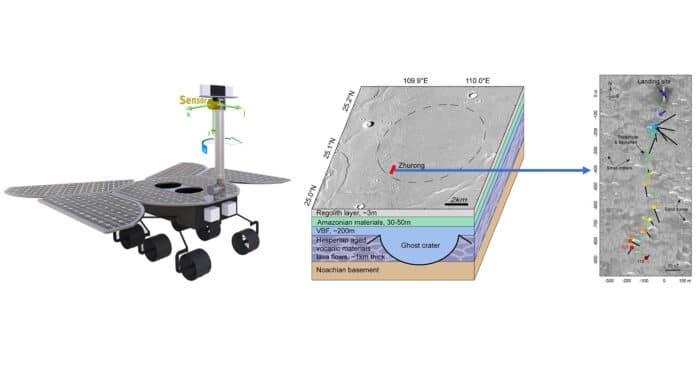Mars’ magnetic field has been measured at a large scale by orbiting spacecraft and at a very small scale via Martian meteorites. Magnetic surveys probe crustal magnetism on length scales comparable to the distance, or altitude, from the source.
During the Zhurong rover’s initial 1-km journey to Mars, a collaborative research team under the direction of Prof. DU Aimin from the Institute of Geology and Geophysics of the Chinese Academy of Sciences (IGGCAS) discovered incredibly weak magnetic fields. This suggests that there are no magnetic abnormalities below Zhurong’s landing area.
Scientists used two fluxgate magnetometers aboard the Zhurong rover to conduct the first magnetic field survey in the Utopia Basin on the Martian surface. In the Utopia Basin, the magnetic field’s strength was shockingly weak.
The crustal magnetic field at InSight’s landing site was an order stronger than that deduced from orbital observation, according to data from the NASA Mars lander InSight, which landed roughly 2,000 km southeast of Zhurong. However, measurements from Zhurong showed the opposite outcome, with the average intensity being an order of magnitude lower than that deduced from orbit.
One of the biggest challenges in planetary exploration is getting extremely accurate planetary surface magnetic data. The first rover using magnetometers is Zhurong. The rover and mast rotations were used in along-track calibration to isolate the Martian magnetic field from the rover interference field. The Martian surface may now be measured in situ at many points with an accuracy of the order of nanoteslas.
The fragile magnetic fields found by Zhurong suggest that the crust beneath Utopia Basin may have been demagnetized by a subsequent significant impact in the early Hesperian or that it may have been unmagnetized since its formation some 4 billion years ago. Further insight into the interrelated magnetic, climatic, and internal history of early Mars is provided by this new limit on the timeframe of the Martian dynamo.
Journal Reference:
- Du, A., Ge, Y., Wang, H. et al. Ground magnetic survey on Mars from the Zhurong rover. Nature Astronomy (2023). DOI: 10.1038/s41550-023-02008-7
